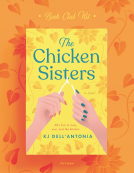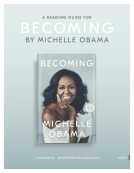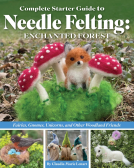
The Pacific Northwest Native Plant Primer
225 Plants for an Earth-Friendly Garden
by Kristin Currin; Andrew Merritt
This title was previously available on NetGalley and is now archived.
Send NetGalley books directly to your Kindle or Kindle app
1
To read on a Kindle or Kindle app, please add kindle@netgalley.com as an approved email address to receive files in your Amazon account. Click here for step-by-step instructions.
2
Also find your Kindle email address within your Amazon account, and enter it here.
Pub Date Feb 28 2023 | Archive Date Feb 28 2023
Talking about this book? Use #ThePacificNorthwestNativePlantPrimer #NetGalley. More hashtag tips!
Description
The benefits of native plants are enormous—they reduce maintenance, require less water, and attract vital, earth-friendly pollinators like birds, butterflies, and bees. Gardeners seeking to add them to their landscape will find no better guide than The Pacific Northwest Native Plant Primer. Packed with proven advice that everyhome gardener can follow, this incomparable sourcebook profiles 225 recommended native wildflowers, grasses and grasslike plants, ferns, shrubs, and trees. With additional introductory information on preparation, planting, maintenance, and climate considerations, it’s everything you need to know to create a beautiful and beneficial garden. This must-have handbook is for gardeners in Oregon, Washington, and southern British Columbia.
Available Editions
| EDITION | Other Format |
| ISBN | 9781643260716 |
| PRICE | $24.99 (USD) |
| PAGES | 264 |
Featured Reviews
 Media/Journalist 16509
Media/Journalist 16509
This is a well illustrated book packed with profiles and photos of native plants for your PNW garden. It gives a ton of information and the plant profiles are very complete. It talks about which type of climate/habitat each plant is best suited for, with photos and growing information. My one complaint is that it doesn't list garden zones for the plants.
I read a temporary digital ARC of this book for review.
 Beth G, Educator
Beth G, Educator
I love wildflowers and on travel I always take lots of pictures of the native wildflowers. I love this book because it shares the wildflowers of Oregon and Washington. The climate in those states is very conducive to wildflowers and there are lots. If you live in that area consider adding some of these to your own flower beds. There are a lot of benefits to planting native plants. Birds, bees and butterflies love them and will spend some time in your yard which is very beneficial to everyone. They are low maintenance and you do not have to water as much.Those are a plus in my book. So use this book to find out which ones will grow well in your yard and add a few this year.
Beautifully photographed and a terrific book for gardeners considering changing their landscapes to native plants and pollinators. Rather than using the usual USDA zones, this book considers the various diverse habitats of the Pacific Norhwest, from the wetter western side of the Cascades (where 150 inches of rain is common) to the more arid parts of the plateau in the east (10 inches of rain). The descriptions were informative and well researched. This volume includes native waterwise plants for the eastern PNW gardener and lush wildflowers for the coastal gardener. I was impressed by the concern for ethical propagation (don’t steal the flowers from endangered habitats!). My only criticism was the organization of the entries — although she eschews the gardening zones, I wished (as an arid gardener near Spokane) that there was more of a grouping of similar plants for regions. 4 stars!
Thank you to Timber Press and NetGalley for an advanced reader copy in exchange for an honest review
 Randal W, Reviewer
Randal W, Reviewer
As we cope with the effects of climate change, it becomes more and more important that we stop trying to force non-native plants into our landscapes. Better to use those plants that belong there, and have adapted to our environment over many years. That's why this is an important book. The author's identify many, many plants that we should be using! Full of information, beautifully photographed, it's a great addition to my library. I will be referring to this book for a long time!
 Educator 989387
Educator 989387
A useful tool for gardeners, especially since nursery staff are not always versed in native plants. Plenty of plants that will serve gardeners, are not native however. And a changing climate will continue to enforce this fact. While the book is useful for identifying native plants, the idea tht natives themselves are the preferred category of plants for a garden is less substantial than the writers understand.
 Darci S, Reviewer
Darci S, Reviewer
This was very informative and the pictures were stunning!! I loved how it was broken up and was particularly interested in the plants eastern Washington. I loved how it wasn’t Washington as a whole, when there are clearly different growing conditions. Very helpful. There were a couple parts that I wished had different organization. I will continue to refer to this for years to come!
 Lisa T, Librarian
Lisa T, Librarian
This is the gardening book PNW gardeners have been waiting for, an informative and beautiful guide to PNW native plants. I can't wait for this to come out in print, long overdue! Thank you for the e-arc.
 Aria E, Reviewer
Aria E, Reviewer
A gorgeous encyclopedia of genuinely native plants to the Oregon and Washington areas that will improve your garden’s ecology and prospects for your local pollinators!
If you need lush color photos to grace every page of a plant book then this is definitely for you! I only wish I had a physical copy so I could see all the pages I’ve bookmarked for improving my own little attempt at a Pacific Northwest Pollinator paradise (say that ten times fast!).
The first 50+ pages introduce and reinforce the idea of using plants that are native to your area, not just “native cultivators”; an important distinction that is clearly explained and informative. Both for the health of your garden and from a larger ecological worldview perspective – planting native is good. Good for the health of your plants, good for the lowliest of grubs to majestic butterflies and beloved bumbles, good for the birds and even good for the health of the soil itself.
225 plants is a lot, 225 plants that are not crazy invasive ecological home wreckers is a gold mine. Just about any Gardner from newbie to novice will discover a new plant in these pages and be given enough information to know if they want to pursue getting it rooted in the dirt. I’ve discovered at least eight new shade loving and tolerant varieties for an area of my yard that has thus far been undecided.
Beyond the introduction we are blessed with page after page of informative plant ID, accompanied by gorgeous photos often illustrating the species in its natural habitat. Each page has a quick reference key to let you know who benefits the most from the plant: birds, hummingbirds, bees, butterflies and caterpillars. So at a glance you’ll know of the page applies to the grounds around your mason bee mansion or for the chickadee palace grounds.
Want to save the bees? Want more hummingbirds speeding through your garden? Trying to create a haven for butterflies? Seeking ways to coax more caterpillars into your space? Love the sound of happy song birds in the morning? “The Pacific Northwest Plant Primer” is the perfect tome for all of that and more, definitely a staple for your “garden” shelf for years to come.
Pick up a copy for yourself this Spring to pour over this with your seed catalogues handy or it’ll make a perfect gift for any green thumb in your life. It’ll be publishing on my birthday so I might have to use that as an excuse purchase myself.
Bottom line, if you garden in Oregon and Washington there is something here for you.
A big old “Thank You” to Netgalley, the Publisher and of course the author for the chance to read this book in exchange for an honest review. Your efforts are in good hands and I appreciate the trust.
 Jayme W, Educator
Jayme W, Educator
I garden as a hobby and live in Washington State, so when I saw this book offered on NetGalley, I had to read it! The full-color pictures are amazing! The book is broken down into five sections; Wildflowers, Grasses, Ferns, Shrubs, and Trees. I admit, I skimmed the grasses section. Grasses don't belong in my garden.
I thoroughly enjoyed the description and picture of each plant. Each entry is explained well and easy to read. Thanks to this book, I was able to identify a plant in my flower bed that I thought was just a weed. Turns out, it's a wildflower! I will also be planting some of the varieties in this book in my own garden!
Readers who liked this book also liked:
Silvia Moreno-Garcia
Historical Fiction, Literary Fiction, Sci Fi & Fantasy
Robin Soans, Claudia Roden
Cooking, Food & Wine, Nonfiction (Adult), Travel


















